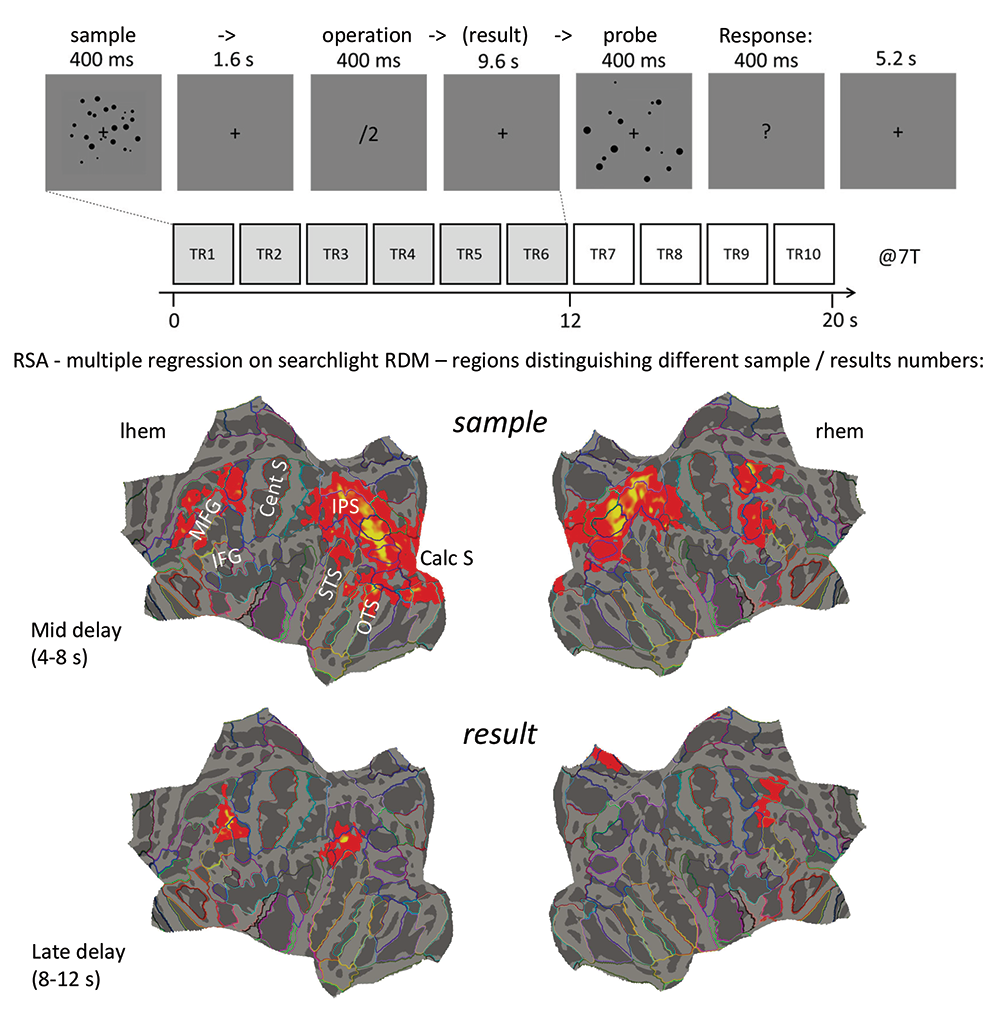Human beings are capable of mentally manipulating quantities. Neuroscience has already identified the brain regions activated during numerical tasks, from the visual perception of quantities to more or less complex mathematical operations. They have also identified the neural codes that represent the individual quantities perceived visually. But how does our brain combine or transform representations of quantities during a mental calculation operation? How does it code a quantity when it is generated by a calculation?
Researchers from UNICOG ("the computational brain" team) and BAOBAB (METRIC lab) - NeuroSpin department - used ultra-high field functional magnetic resonance imaging (7T MRI) to image the brain activity generated by the visual presentation of a quantity and that resulting from a mental calculation process in adult volunteers. The task was to perform an approximate calculation involving mentally generating new quantities from a quantity of perceived points.
The results of the study were published in Nature Communications. While patterns of brain activity are detected along the dorsal visual pathway and in frontal and occipito-temporal regions in response to the perception of quantities, brain activity corresponding to the representation of quantities generated during mental calculation operations is detected mainly in higher regions such as the angular gyrus and lateral prefrontal cortex.
Above all, the study identifies subregions of the intraparietal sulcus, typically involved in sensory-motor integration, as the only ones to share the same coding of numbers perceived and those generated during the mental operation.
These fundamental research results provide a more rigorous understanding of the neural processes that give rise to numerical abilities, and may in future enable us to test more precisely the nature of disorders in these abilities, observed for example in dyscalculia.

Contact Frédéric-Joliot Institute for Life sciences: